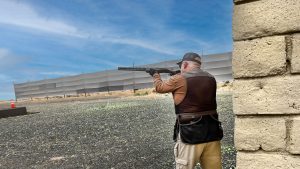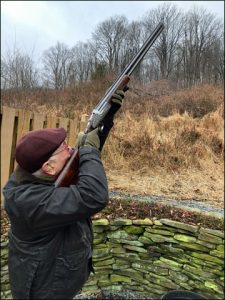How to Read the Flight Path of a Clay Target
To effectively read the trajectory of a clay target, it’s essential to first understand the mechanics of the target’s launch. The launch angle, speed, target size and direction are predetermined factors that influence the target’s flight path. In trap shooting, targets are typically launched from a single machine positioned in front of the shooter, whereas in skeet shooting, targets are launched from two machines situated at different angles. Familiarizing oneself with these launch parameters is the first step toward predicting and interpreting the target’s trajectory.
Moreover, environmental factors such as wind speed and direction can significantly affect the trajectory of a clay target. Shooters must learn to account for these variables, as they can cause the target to deviate from its expected path. By understanding both the mechanical and environmental factors at play, shooters can develop a keen sense of anticipation and improve their ability to predict where a target will be at any given moment.

Analyzing the Flight Path of Clay Targets
Analyzing the flight path of clay targets involves observing their initial launch characteristics and predicting their subsequent motion. Typically, clay targets follow a parabolic trajectory due to the combination of propulsion force and gravity. By understanding the basic principles of projectile motion, shooters can begin to anticipate the arc and endpoint of a target’s flight path, allowing them to position themselves optimally for a successful shot.
One critical aspect of analyzing the flight path is recognizing the launch angle. A steep launch angle will result in a higher, shorter arc, while a shallow angle will produce a longer, more extended trajectory. Shooters must quickly assess this angle upon the target’s release to determine the best point of interception. Additionally, understanding the target’s speed is vital, as faster targets will reach their peak and descent quicker than slower ones.
Furthermore, visual tracking of the target is essential during its flight. Shooters must maintain a continuous focus on the target, adjusting their aim as it progresses along its trajectory. This requires not only physical dexterity but also mental acuity to process the target’s movement in real-time. By developing a systematic approach to analyzing flight paths, shooters can enhance their ability to predict and intercept moving targets efficiently.

Key Techniques to Track Moving Targets
Tracking moving targets is a skill that combines precise visual focus, quick reflexes, and strategic planning. One of the foundational techniques in tracking clay targets is maintaining a steady and consistent stance. A stable posture allows shooters to smoothly follow the target’s motion without unnecessary body movement, which can lead to inaccuracies. Keeping the firearm aligned with the target’s trajectory is critical for successful tracking.
Another crucial technique is “lead,” which involves aiming slightly ahead of the moving target. The lead distance varies based on the target’s speed and direction, requiring shooters to judge the appropriate offset intuitively. Practicing the lead technique helps shooters adapt to different target trajectories, enhancing their ability to hit fast-moving clay targets accurately.
Moreover, anticipating the target’s path is vital for effective tracking. This involves predicting the target’s future position based on its current trajectory and adjusting the aim accordingly. Training the eyes to stay focused on the target without fixating on the gun barrel can significantly improve tracking efficiency. Developing these techniques through consistent practice enables shooters to keep up with the rapid pace of moving targets, increasing their chances of making successful shots.

Improving Accuracy with Trajectory Insights
Improving accuracy in clay target shooting relies heavily on gaining insights into the target’s trajectory. By analyzing previous shots, shooters can identify patterns and common errors in their approach. This reflection allows for adjustments in technique and strategy, leading to enhanced accuracy over time. Video analysis can be a valuable tool in this process, providing visual feedback on target alignment and timing.
Utilizing trajectory insights also involves refining one’s shooting instincts. As shooters become more familiar with different target trajectories, they develop a more intuitive understanding of when and where to shoot. This instinctive shooting is a result of cumulative experience and focused practice, allowing shooters to react quickly and accurately to any given target scenario.
# # #


Comments